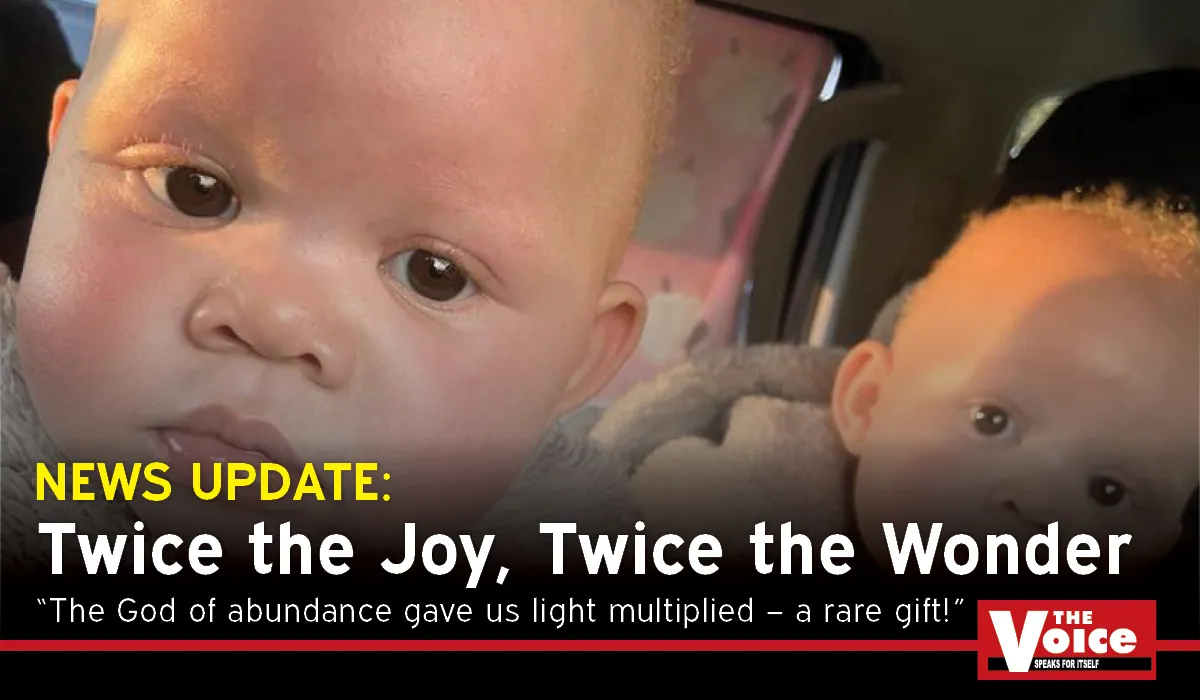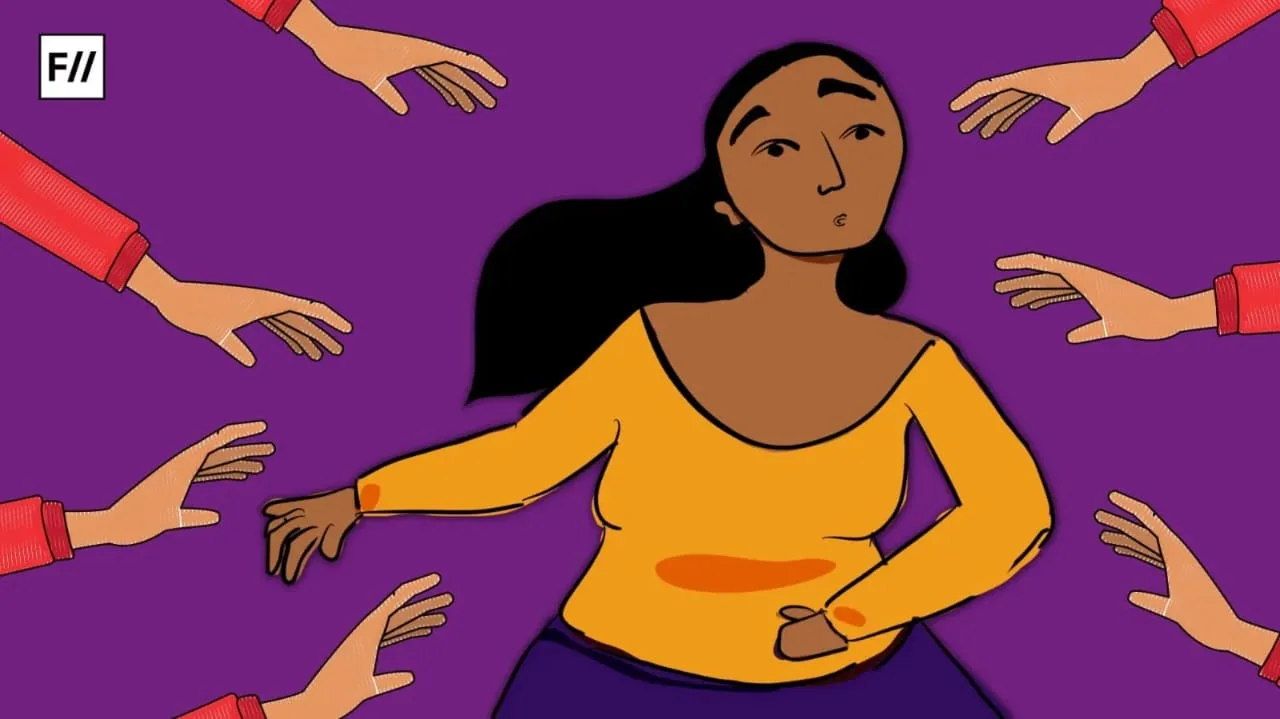By Boitumelo Maswabi
Copyright thevoicebw

“The God of abundance gave us light multiplied – a rare gift!”
When a routine prenatal ultrasound revealed that 27-year-old Thato July was expecting twins, she had no idea another surprise awaited her.For her husband, Thabang – a devout Christian – the news was nothing short of divine confirmation.
As a teenager, way before marriage or fatherhood were even on the horizon, he had scribbled a list behind the door of his childhood bedroom. Among ambitions like ‘build a house’, ‘buy a Range Rover’, and ‘get married’, was one but heartfelt dream: ‘have twin girls’ – much to the chagrin of his own folks, who were more interested in his educational and professional plans.
“At the time, it made him the butt of family jokes,” Thato narrates to Voice Woman in this moving, faith-filled yet sensitive conversation.
“When I broke the news to his parents, they chuckled,” Thato recalls. “They’re not as spiritual as Thabang, so this touched them deeply – a testimony in its own right. Thabang had always longed for a twin sibling; and so had I, just not as intensely,” she continues.
Indeed, the dream had grown roots long before the pregnancy. The Molepolole native fondly remembers moments from their early courtship, when Thabang would casually remind her that he was destined to father twins.
“Whenever he saw twins in public, he’d make a point of connecting. Once during his varsity days, he met a mother with twin girls at the mall and used his meagre allowance to buy them each a pair of pants, repeating the same gesture for another family shortly thereafter. He wasn’t just speaking it into existence, he was planting the seed.”
Fifteen years later, the seed blossomed into a surprise double blessing. Born at just 33 weeks, the bundles of joy arrived earlier than expected.
“My water just broke suddenly. There were no intense contractions – just a slight discomfort. Then we rushed to the Bokamoso Private Hospital, and there were no complications either, despite them being preemies,” the first-time mumremembers. “We’d only known the gender of one baby; the other one’s remainedbafflinglyhidden in every sonogram.”
Because Thabang was working out of town in Mahalapye, Thato’s mother was by her side for the delivery. “Dr Masikara had recommended a C-section,” she explains.
“And for the first 15 minutes of the procedure, the room was alive with conversation among doctors, nurses, my mum. Then… sudden silence!” her eyes well up as she thinks back tothe shift in the room’s energy.
“The thing is, I didn’t think something was wrong. I mean, they had just been born! Their hair had a slight orange hue, yes, their skin paler, but I thought maybe it was just because they were fresh out of the womb,” Thato’s mum, Mrs Pheto, mum chimes in.
The silence grew more deafening by the second and Thato began probing. Once they presented the newborns to her,reality dawned.Though perfect in form and health, the twins were different in a way no scan had revealed.
Soon, silence and surprise were replaced byanxiety and uncertainty, “The doctors couldn’t agree on anything. I was a bit drowsy but could see everything. The babies were tiny, so I spent a few precious moments with them before we were separated – them to the incubator, me to recuperate.”
The next day, with Thabang at her side, the new parents went to see their offsprings in the nursery. “The hair and eyes were hazel – not dark brown like ours,” she pauses… “The babies were breathing, functioning limbs… beautiful. Once again, I attempted to solicit an explanation from the pediatrician, but to no avail. He just said though he saw their eyes and hair weren’t fully pigmented, and with the absence of nystagmus, which is a key sign of albinism, he couldn’t confidently conclude it,” she explains.
“Nystagmus?I was hearing some of these terms for the first time,” her mum says, adding:“Dr Masikara then took the infants closer to the widow to test how they’d react in the sun. He called a few of his colleagues to come help him assessthe babies’ eyes, which were steady. Eventually, the consensus was to observe the infants as they developed.”
Meanwhile, Thabang was euphoric about hislong-wished-for daughters. Whether they were born with albinism or not was immaterial. He hadn’t just prayed for twins. He had asked for twin girls and that’s exactly what he got. Their albinism didn’t challenge his faith; it affirmed it.Weeks before their birth, he told his wife about a dream in which one of the babies was fair-skinned, like a Caucasian. Still, nothing could’ve prepared Thato for the reality.
“Albinism isn’t a disability,” Mrs. Pheto says. “But we feared for their future. In some countries, people with albinism are harmed for ritual purposes. That terrified us.”
Indeed, Thato struggled emotionally. “I felt like God hadn’t given me what I asked for. For a year, I couldn’t pray. Some days I adored them. Other days I was overwhelmed with fear; would they be accepted, loved, get married? My husband didn’t fully grasp my emotions. It took me nearly two years to come to terms with it.”
Part of the shock, her mother adds, came from Thato’s age. “She was young and had dreams of her own. There was no history of albinism in either family,” and Thato adds, “When it was confirmed at 6 weeks, I wailed, hoping for a different outcome. Albinism, caused by varying melanin levels, falls into two main categories: oculocutaneous (OCA), affecting skin, hair, and eyes, and ocular (OA), affecting mainly the eyes.”
Healing began when Thato found a new spiritual perspective. “A friend introduced me to teachings by John MacArthur, R.C. Sproul, and Paul Washer. I learned that God is sovereign and owes us nothing. Even in disappointment, He is still God.”
She reflects on Thabang’s words: “The God who answered the prayer for twins is the same God who chose to give us twins with albinism. He didn’t make a mistake.”
Today, their daughters, Yolisa and Liyana – who will celebrate their second birthday this week – are thriving, radiant symbols of joy. They turn heads not just for their appearance but the light they carry.
Embracing her role as a mother and advocate, Thato launched a TikTok account recently, ‘Born Different’, showcasing their journey and gaining thousands of followers. The girls have become little celebrities—drawing love instead of whispers and sparking conversations.
“I’m doing this for them—it’s my way of accepting and introducing them to the world. With many fans around the world who have albinism, I’m learning a lot; one even objected when I called it a condition. Still, they receive so much love. They’re already living their purpose—challenging perceptions and dispelling misconceptions.” Thato says, smiling. “And the God of abundance gave us light multiplied—a rare gift!”
It’s true, albino twins are exceptionally rare.



